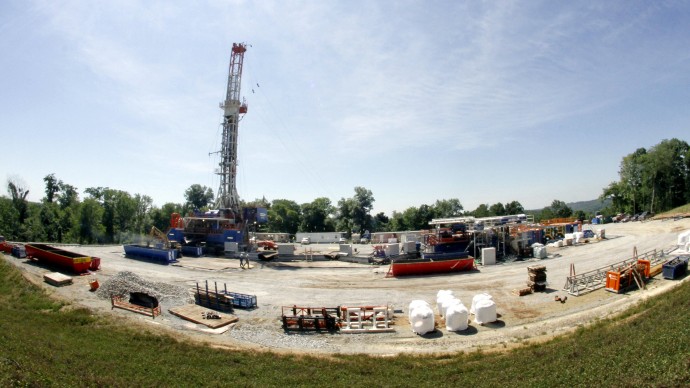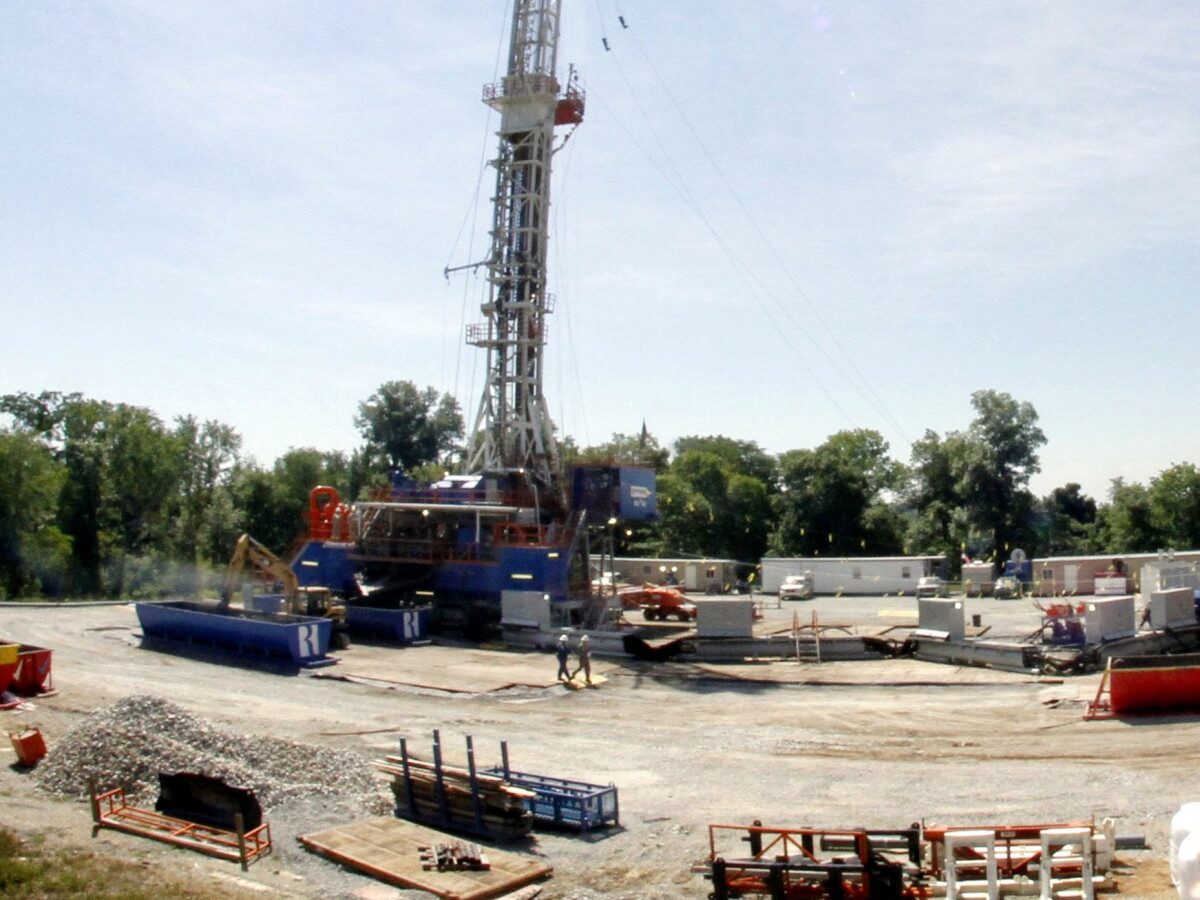
(MintPress) – As oil companies move into Amish communities to extract oil through hydraulic processing, residents are speaking up, calling out oil companies for carrying out a long-term plan of deceit and manipulation. But not all Amish are in the same boat, with some benefiting from larger leasing payouts than their neighbors who signed onto contracts years ago.
The relationship between the Amish communities of Pennsylvania, accounting for more than 50,000 people, and the oil companies is nothing new. Decades ago, agreements were made between the two, often carrying measures not understood by Amish landowners.
Leases permitted oil companies to create shallow gas wells on their property, or so the Amish thought. Today, those leases are allowing oil companies to undergo fracking operations, a much more obstructive process than was described decades ago. The process of hydraulic fracturing, or fracking, requires a mix of sand, chemicals and water to be injected into the ground to create fissures, allowing oil to be extracted.
As for the money, those who signed into leases previously now find themselves in a tough situation, as their neighbors are bought out by oil companies at a much higher price tag.
“During drilling, which is round the clock, the noise and light pollution is significant. The per-acre lease payment is substantial and has risen dramatically since this whole process started,” one writer stated in a post published by Amish America. “A couple years ago it was $50 to $250 an acre, depending on the particular company one was dealing with. The last I heard (reliable info) was $5,800 an acre for a 5 year (5 year renewable) lease.”
While Amish choose to live off-the-grid, they’re not immune to the lure of the dollar. Settlements from oil companies to extract oil from deep beneath Amish land is an offer tough for them to refuse, splitting communities between those holding on to the simple way of life, and those folding for the almighty dollar.
The environmental implications of fracking on Amish land is of particular concern for farmers, who worry that water contamination could have widespread negative consequences on their crops and livestock.
There are some concerned about the possible implications of such a practice, but their lifestyle does not allow access through technology to the information regarding fracking’s damaging side effects, including water contamination, that are available today.
They’re perhaps not aware that 270 communities throughout the U.S. have stepped up to pass legislation limiting fracking within given areas — and it’s all done for a reason. As oil companies skirt around Environmental Protection Regulations, including the Clean Air and Water Act, there’s widespread concern that not enough has been done to look into possible implications of the practice, including the leaking of carcinogenic chemicals into the water supply.
The Amish are separated from the rest of America, in a sense, yet there’s a level of understanding that arises when Amish see large tankers take over their land — it simply looks like trouble.
“I don’t like people ripping the land up, plus I think it’s going to be bad for all the springs, the water systems,” Seth Byler, an Amish farrier in Pennsylvania told the Daily. And who knows what else it will cause?”
That’s a common sentiment among those in the Amish community. Having already heard tales of deceit on behalf of oil companies, there’s an apprehension to trust that the fracking business will leave their land in the same condition in which it was found.
“We don’t want huge gas companies coming here because of the heavy pollution, the traffic, and so much money,” Andy Miller, an Amish Pennsylvania resident told reporter Elizabeth Royte. “When money rules, a lot of bad things happen to a community.”
Miller sold his land years ago to Atlas, which was absorbed by Chevron in 2011. While the money he obtained through the settlement helped him carry out repairs on his house and land, the scene today on his land is nothing like what he expected — at the time he signed the agreement, he hadn’t a clue what hydraulic fracturing required. Now, the land is temporarily home to tanks, gas pipes, compressors, generators and produced water ponds.
“The money helped, but I wish I knew more of what to expect,” he told Royte.
While some are concerned, there are those making a profit off the oil companies, focusing on the short-term. The Amish community in Holmes County, Ohio formed a coalition to communicate with oil companies, drafting agreements on their terms.
It may give them the upfront cost they’re seeking, yet it’s still a situation of an Amish community dealing with large oil companies whose pockets are undeniably deeper than those whose lands they’re leasing.
Amish sitting on liquid gold
The oil companies’ business in Amish territory is just beginning. The 95,000-square-mile Marcellus Shale formation that stretches from Southern New York, through Pennsylvania, Ohio and West Virginia, is a highly desired, oil-rich stretch of land coveted by major oil companies. It’s rural areas are also home to the Amish.
By February 2011, there were already 5,800 permits for wells established in Pennsylvania, the heart of the Marcellus Shale formation. Amish America reported on Jan. 16, 2013 that fracking had already began to consume a small portion of the shale formation, found in New Wilmington, Penn., home to 3,000 Amish in 18 congregations. The going rate in New Wilmington, now, is $3,500 per acre.
And while the Marcellus Shale has become the hotspot for fracking activity, it’s difficult to find an area throughout the nation that isn’t, in some way, tied to the industry. The Amish community in Southern Minnesota last summer joined environmental activists in their fight against the silica sand mining industry. The sand is a crucial component of the fracking process, used along with water and chemicals to break up formations thousands of feet underground, leading to the extraction of oil.
The Amish in Minnesota have a different battle. They’ve seen communities transformed, not through the mining of the sand, but through the construction that’s come along with it. Railroads, including the Farm2Rail, have proven disruptive to the Amish way of life, causing more than 3,000 members of the Amish community to rally on the side of environmentalists attempting to halt the sand mining.
If predictions regarding the future fracking in America are any indication, the U.S. is only beginning its fracking activity — and so are the Amish. According to the U.S. Energy Information Administration (EIA), the U.S. saw an increase in oil production of 760,000 barrels-per-day, putting the States on track to be world’s net exporter of oil within the next decade, even surpassing Saudi Arabia.
The oil is there, and oil companies are maneuvering their way around regulations and paying out landowners for the rights to drill. The Amish, living in the heartland of the oil fields, are likely to find themselves in the midst of the world of greed and consumption they’re trying to escape.


